theartsdesk in Tallinn: Estonian Music Days | reviews, news & interviews
theartsdesk in Tallinn: Estonian Music Days
theartsdesk in Tallinn: Estonian Music Days
Women as composers and performers just happen to be top of the eco-bill
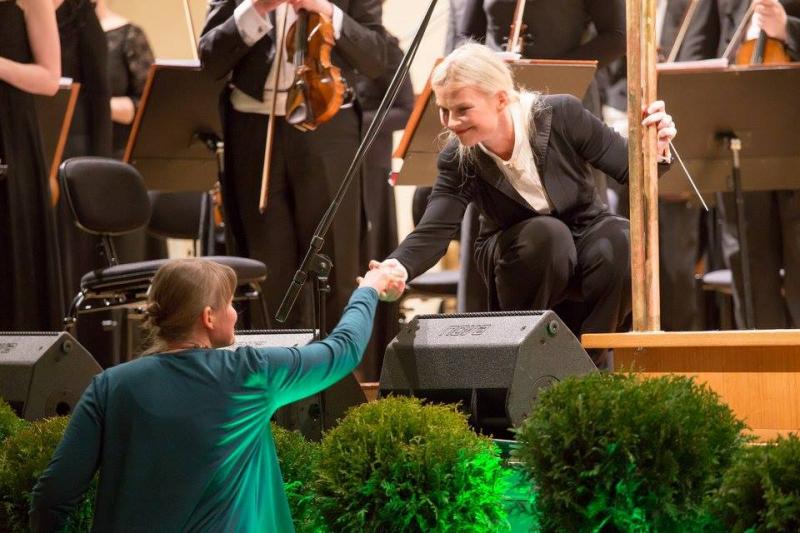
A young nation with a small population and the most untarnished democratic credentials in Europe today can do certain things with festivals not so easy to imagine here. When Estonian Music Days, focused on native and contemporary music, took nature as its theme for 2016 – in this case posing a question in the title, "Green Sound?" – it could expect many of its 60 featured composers to respond to commissioning by making a direct link to the native ecology.
That, though, was the first thing to strike me as I arrived just over halfway through the Estonian Music Days (10, to be precise) in Tallinn. In a converted guild hall, the Kanuti Gild Saal, just over the road from what the French would call a hotel de charme, itself connecting via a courtyard the two most treasurable streets in the extensive old town, Pikk and Lai, the five Icelandic-based women who make up Nordic Affect were playing music by six composers, four of them female (two Estonian, two Icelandic).
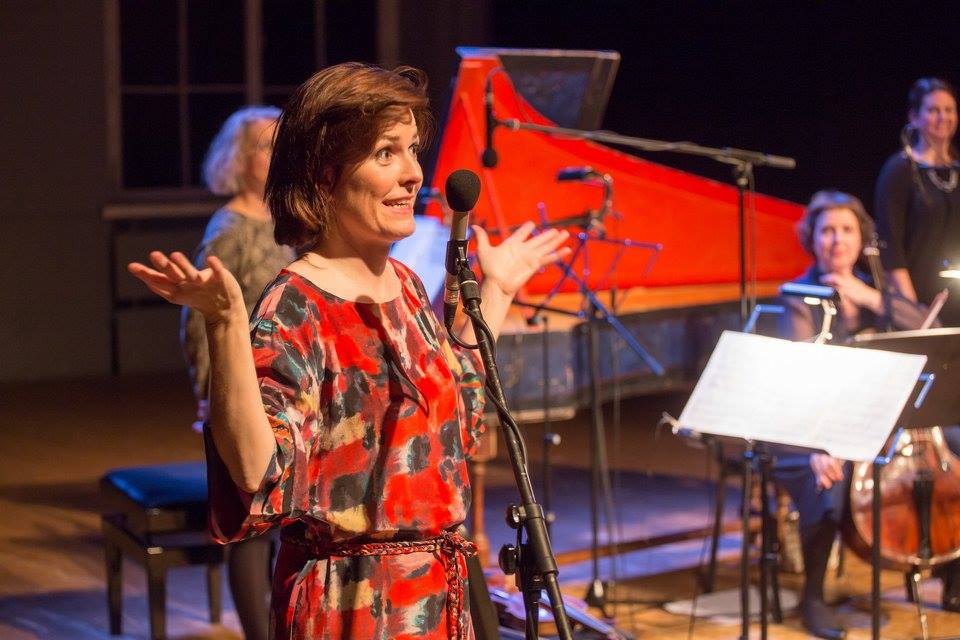 Iceland, of course, has an even smaller number of inhabitants and a yet closer connection to nature, so it makes a natural sister-country to Estonia. This point was made beautifully clear by the violinist of Nordic Affect, Halla Steinunn Stefánsdóttir (pictured above at the concert). By speaking so vivaciously between the six works, she came up with eloquent verbal answers to "Green Sound?", starting with her own experiences of recording the sounds of an Icelandic glacier which won't be with us in less than a century.
Iceland, of course, has an even smaller number of inhabitants and a yet closer connection to nature, so it makes a natural sister-country to Estonia. This point was made beautifully clear by the violinist of Nordic Affect, Halla Steinunn Stefánsdóttir (pictured above at the concert). By speaking so vivaciously between the six works, she came up with eloquent verbal answers to "Green Sound?", starting with her own experiences of recording the sounds of an Icelandic glacier which won't be with us in less than a century.
That came on the heels of the first work, Estonian composer Mirjam Tally's Warm Life at the Foot of the Iceberg, taking its title from the poet Kristina Ehin (whose work Halla had discovered in translation on her first visit). Yet the leading question remained: were the actual works worth hearing? In Nordic Affect's carefully balanced programme, played to a packed and (in the players' words) very serious audience, absolutely; and it was all about natural evolution, a process for which music is uniquely well equipped.
Tally and Helena Tulve, a guiding light of the festival, tended more to striking sound effects, which means the strings play anything but songfully; groaning and soaring glissandi were to become a hallmark in the works to come. The Icelandic input was more earthed, tonally rooted, developing from a ground – most strikingly in Úlfur Hansson's ÞÝÐ (you can hear a rather different performance in Stykkisholmur's Library of Water, which inspired the piece, here). Halla encouraged audience participation, splitting us into three groups, each sustaining a different note to make a drone which we held for eight minutes while the string trio unfolded various sounds and lunges against us – a novel experience in listening because holding your note could be thrown by the sounds you were hearing from the platform.
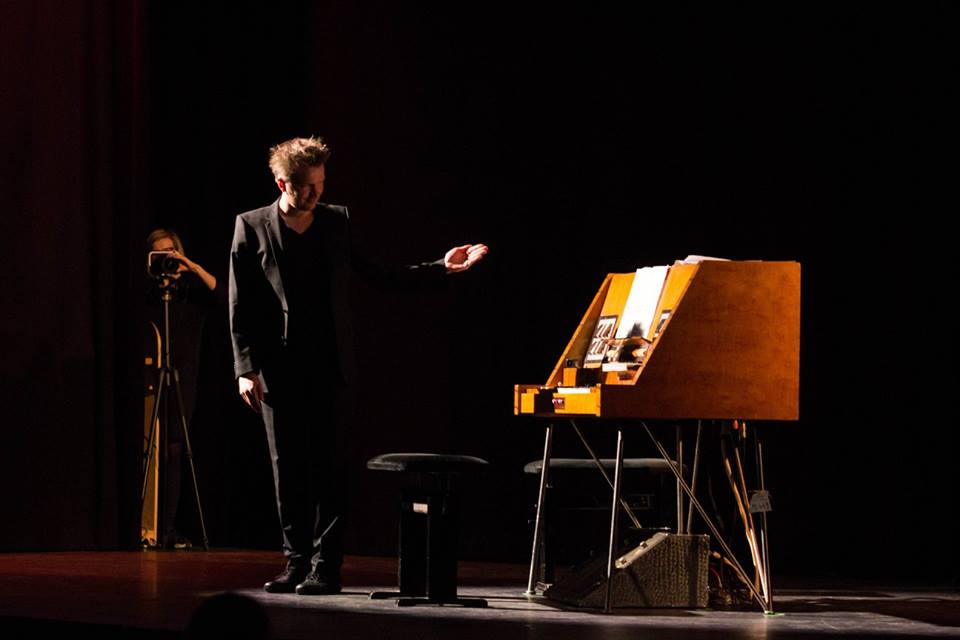 ÞÝÐ refers to a particular type of favourable Icelandic weather. And the following evening clement nature was present in the Conference Hall of the National Library, a grand project launched in the last years of Soviet rule and designed by Estonian Raine Karp, in the shape of Anatol Sügis, one of the two inventors of Iceland's first electronic organ, the Varioola. Sügis is known to many Estonians as not just a distinguished scientist but also a pioneer in holistic thinking and the vegan way of life. Alas that I could not understand his Estonian in interview with Margo Kõlar, the rather more introspective professor of electroacoustic music who presented the evening, but it was easy to judge his warmth and humour (I spoke to him in English briefly afterwards when some of us went up on stage to inspect the extraordinary instrument).
ÞÝÐ refers to a particular type of favourable Icelandic weather. And the following evening clement nature was present in the Conference Hall of the National Library, a grand project launched in the last years of Soviet rule and designed by Estonian Raine Karp, in the shape of Anatol Sügis, one of the two inventors of Iceland's first electronic organ, the Varioola. Sügis is known to many Estonians as not just a distinguished scientist but also a pioneer in holistic thinking and the vegan way of life. Alas that I could not understand his Estonian in interview with Margo Kõlar, the rather more introspective professor of electroacoustic music who presented the evening, but it was easy to judge his warmth and humour (I spoke to him in English briefly afterwards when some of us went up on stage to inspect the extraordinary instrument).
The Varioola, having languished in the National Library since its heyday following its appearance in 1959, came back to splendid life with Sugis’s assistance, and the surprisingly emotional playing of two strong musicians, Kristjan Randalu (pictured above with the Varioola by Mari Arnover) – well known outside Estonia for his deeply-felt jazz piano improvisations – and Marianna Liik, whose new work ReCycling brought both together for a symphonic demonstration of the Varioola’s possibilities. It could not have sounded more impressive, thanks to the peerless reproduction achieved by Tammo Sumera, Estonia's finest sound engineer.
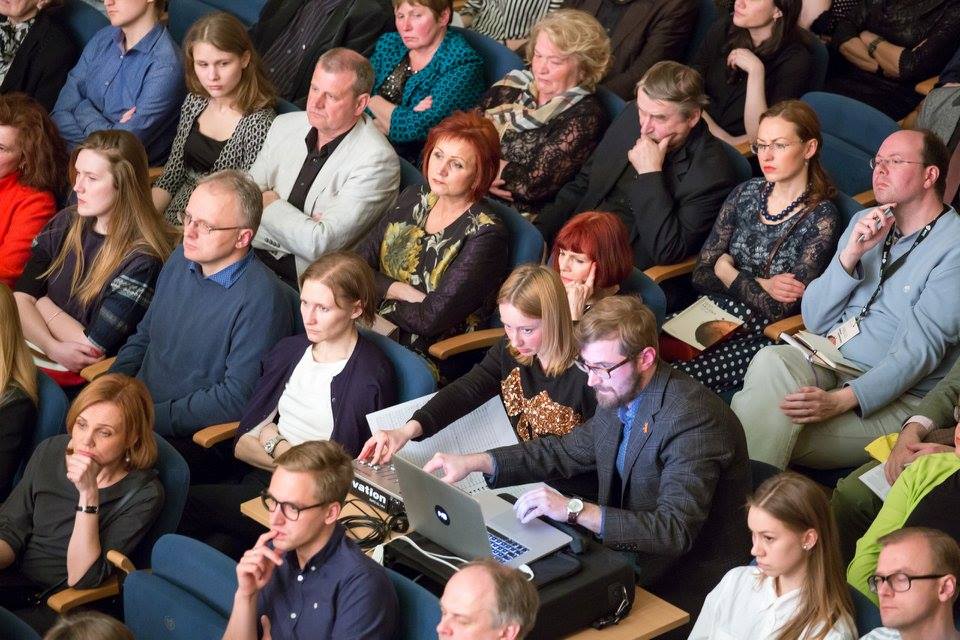 Tammo was deeply moved that the Estonian National Symphony Orchestra took up his great, late father Leppo Sumera’s Sixth Symphony in the handsome Estonia Concert Hall the following evening – the composer died only two weeks after the 2000 premiere celebrating his 50th birthday – and I was shaken to the core by it, too (Tammo pictured above in the centre of the audience with Mirjam Tally). Its premise of focusing on only a handful of intervals augured something dry, but this direct and visceral work is organically symphonic even in its first movement, which uses many pauses and radical shifts in sound and mood; the second is one of the great arcs among slow movements, building to a terrifying intensity of string sound. A masterpiece, on this showing, and magnificently controlled by Anu Tali.
Tammo was deeply moved that the Estonian National Symphony Orchestra took up his great, late father Leppo Sumera’s Sixth Symphony in the handsome Estonia Concert Hall the following evening – the composer died only two weeks after the 2000 premiere celebrating his 50th birthday – and I was shaken to the core by it, too (Tammo pictured above in the centre of the audience with Mirjam Tally). Its premise of focusing on only a handful of intervals augured something dry, but this direct and visceral work is organically symphonic even in its first movement, which uses many pauses and radical shifts in sound and mood; the second is one of the great arcs among slow movements, building to a terrifying intensity of string sound. A masterpiece, on this showing, and magnificently controlled by Anu Tali.
This Estonian counterpart to the already feted Lithuanian Mirga Gražinytė-Tyla is a conductor of whom I long to see much more, a clear-headed balancer of passion and precision. She and her orchestra had their work cut out, with no less than three premieres. The first half brought the law of diminishing returns in too much of the same, from the perfect proportions of Maria Kõrvits’ natural soundscapes in falling up into the bowl of sky through a misuse of full symphonic resources in Maria Vihmand’s Floreo and the running-round-in-circles of Mirjam Tally’s Erosion, Leho Karin’s amplified cello asked to do everything but sing. More is to be expected from Liisa Hirsch, on the evidence of what we heard in a soundclip of her Ascending…Descending. This was the winner of the new composition award Au-tasu made at the concert, and sponsored – this is worth mentioning, because it’s rare that commerce gets behind contemporary music – by LHV Bank. Again, every ticket had been sold, with extra seats placed in the central aisle: would you get that turn-out for new music in any of our own major concert halls?
 The wild card of the evening was both entertaining and remarkably various. Ülo Krigul’s Understandards, pitted vibrant settings of jazz standards’ lyrics exuberantly performed by Estonian Voices (pictured right with Tali and the orchestra) against some surprising reactions from the orchestra. This was one piece I wished had gone on for longer, and it provided the perfect contrast to the summit of Sumera’s mighty symphony.
The wild card of the evening was both entertaining and remarkably various. Ülo Krigul’s Understandards, pitted vibrant settings of jazz standards’ lyrics exuberantly performed by Estonian Voices (pictured right with Tali and the orchestra) against some surprising reactions from the orchestra. This was one piece I wished had gone on for longer, and it provided the perfect contrast to the summit of Sumera’s mighty symphony.
That, perhaps, might have made the most clinching of finales to the festival. Yet it was even more appropriate that yet another full house of all ages were treated to sounds of nature, burrowing deep into our unconscious in Märt-Matis Lill’s The Dream Stream for mixed choir and electronics. Choral bass soloist Henry Tiisma, impersonating a Sami joik singer, provided the “hook”, with the “process” hauntingly unfolded by a wordless Estonian Philharmonic Chamber Choir. Words, in fact, they do less well, at least here in variable arrangements by Clytus Gottwald of Mahler songs, plus a bizarre setting of the Fifth Symphony’s Adagio to Eichendorff’s “Im Abendrot” (“In the Sunset”, that very poem which usually concludes Strauss's Four Last Songs in a more authentic setting). Key words like "need" and "pain" went unstressed in "Urlicht" and the matins bellsong familiar from the Third Symphony was anything but "cheeky in expression" (Mahler's injunction). Two familiar choral settings by Arvo Pärt – how could we miss him in the festival? – were smoothly done.
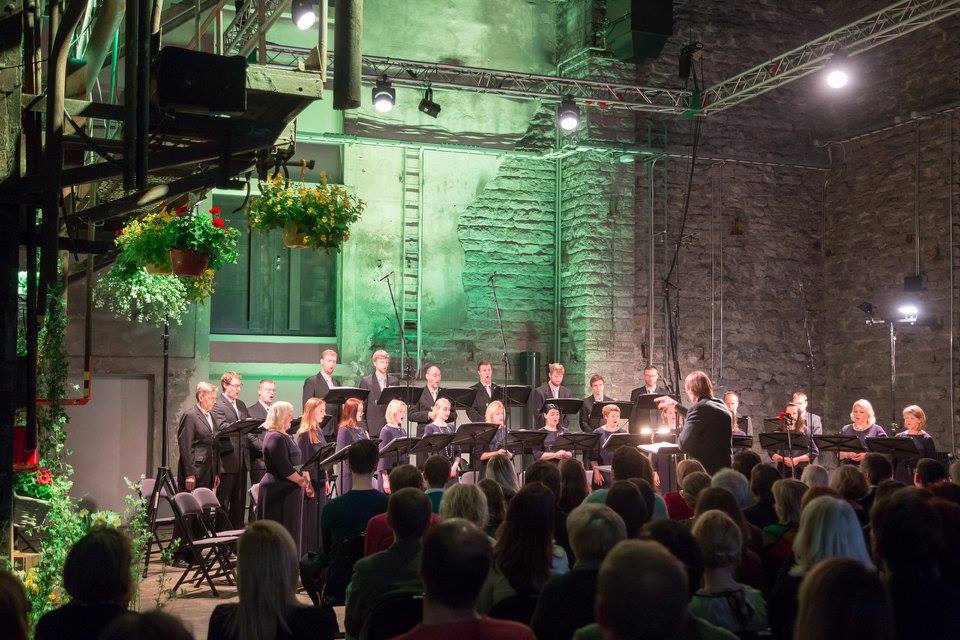 The real joy was to experience the space and the superb acoustics of Cauldron Hall in Tallinn's Cultural Hub, a huge former power plant, appropriately garlanded with green nature and lighting for the eco-festival. Next door, even closer to the Baltic Sea only a couple of hundred yards away, is another industrial building used to house the Estonian Museum of Contempoary Art.
The real joy was to experience the space and the superb acoustics of Cauldron Hall in Tallinn's Cultural Hub, a huge former power plant, appropriately garlanded with green nature and lighting for the eco-festival. Next door, even closer to the Baltic Sea only a couple of hundred yards away, is another industrial building used to house the Estonian Museum of Contempoary Art.
The six installations here are competing for the prestigious Köler Prize, and every visitor gets to vote. For an outsider, the most striking installation had to be Art Allmägi's Cold War with its surveillance devices covered in simulated snow and ice and jostling for attention with icons, iron gates and cosy shop fronts. Like Sumera's landscapes of terror, this is a powerful commentary on what always lay below the surface of Estonia's Soviet years, and what now operates on the fringes. Estonia's great building of international quality, Kumu (pictured below), designed by Finnish architect Pekka Vapaavuori, opened in 2008 and housing the Art Museum of Estonia, has a superbly curated permanent exhibition recently installed on the top floor mixing the Socialist Realism with the private angst of the Soviet times. The building, stunning both from without and within, may overwhelm the actual quality of the art, but historically this gallery could hardly be more interesting. Estonia's recent past is never far away once you leave the enchanted enclave of the old town.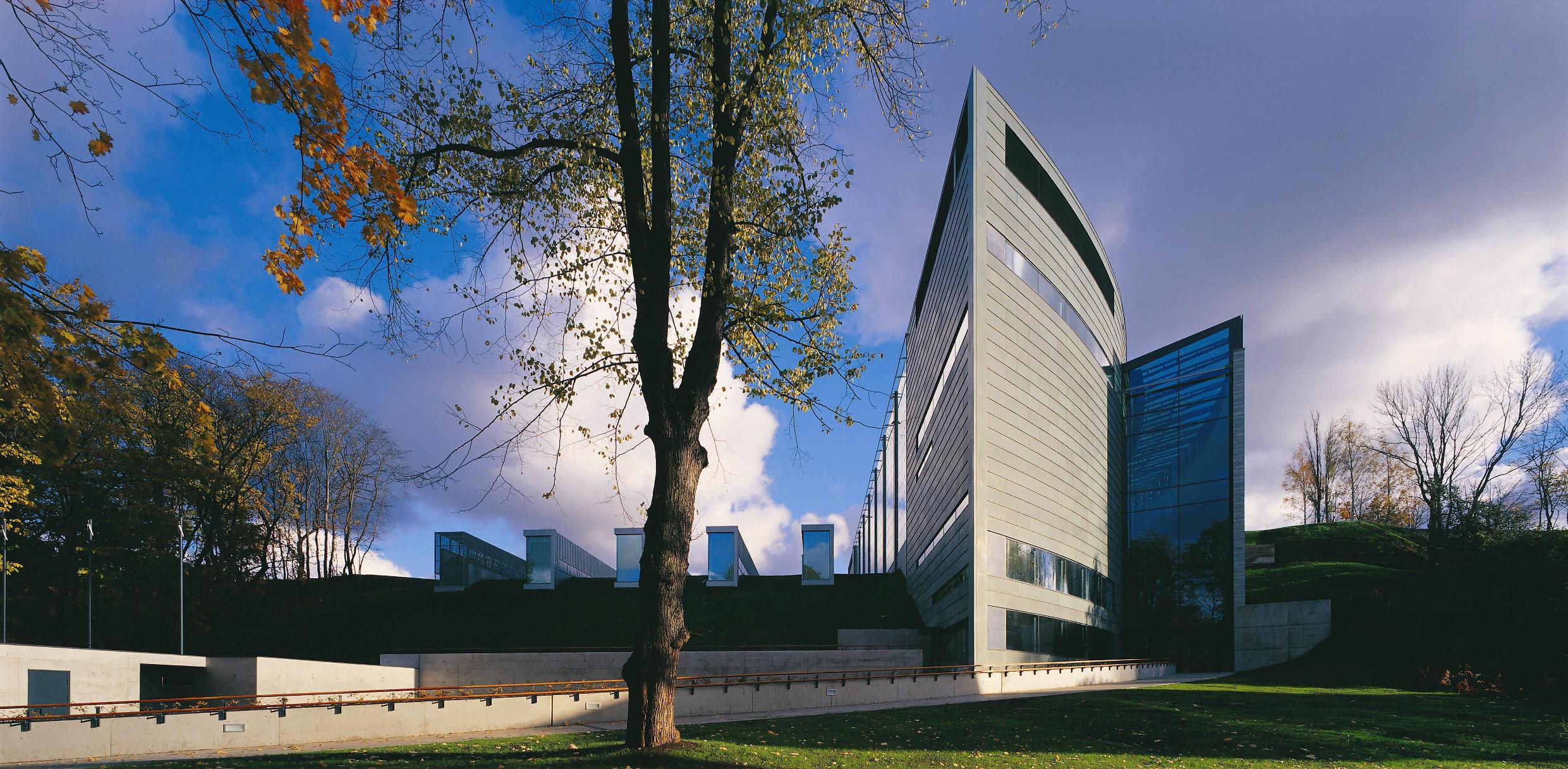
And meanwhile, the young are bent on reclaiming the many industrial wastelands around the old town to create mini Berlin-style enclaves. Telliskivi, now a thriving cultural zone, is one such haunt. I deeply regretted missing the "Birdsong Disco" there which clashed with the orchestral concert but got a flavour of Veljo Runnel's The Rhythms and Melodies of Nature for natural and manipulated nature sounds in the Saturday afternoon prizegiving – rather sparsely attended in the freezing building – for mini-EMD's junior awards.
The youth programme had run its course earlier in the week; it's a terrifically important part of Estonian culture, and next year sees the big choral festival for the younger generation. In the meantime, a small but determined country whose government is determined to invest in its culture, so long as it's allowed to follow its natural course and Big Brother over the border leaves it alone, can only wax ever more impressive. I loved this country and its people when I first encountered them, and nothing on my next two visits to date has dented that impression.
Explore topics
Share this article
The future of Arts Journalism
You can stop theartsdesk.com closing!
We urgently need financing to survive. Our fundraising drive has thus far raised £49,000 but we need to reach £100,000 or we will be forced to close. Please contribute here: https://gofund.me/c3f6033d
And if you can forward this information to anyone who might assist, we’d be grateful.

Subscribe to theartsdesk.com
Thank you for continuing to read our work on theartsdesk.com. For unlimited access to every article in its entirety, including our archive of more than 15,000 pieces, we're asking for £5 per month or £40 per year. We feel it's a very good deal, and hope you do too.
To take a subscription now simply click here.
And if you're looking for that extra gift for a friend or family member, why not treat them to a theartsdesk.com gift subscription?
more Classical music
 Anja Mittermüller, Richard Fu, Wigmore Hall review - a glorious hall debut
The Austrian mezzo shines - at the age of 22
Anja Mittermüller, Richard Fu, Wigmore Hall review - a glorious hall debut
The Austrian mezzo shines - at the age of 22
 First Person: clarinettist Oliver Pashley on the new horizons of The Hermes Experiment's latest album
Compositions by members of this unusual quartet feature for the first time
First Person: clarinettist Oliver Pashley on the new horizons of The Hermes Experiment's latest album
Compositions by members of this unusual quartet feature for the first time
 Gesualdo Passione, Les Arts Florissants, Amala Dior Company, Barbican review - inspired collaboration excavates the music's humanity
At times it was like watching an anarchic religious procession
Gesualdo Passione, Les Arts Florissants, Amala Dior Company, Barbican review - inspired collaboration excavates the music's humanity
At times it was like watching an anarchic religious procession
 Classical CDs: Camels, concrete and cabaret
An influential American composer's 90th birthday box, plus British piano concertos and a father-and-son duo
Classical CDs: Camels, concrete and cabaret
An influential American composer's 90th birthday box, plus British piano concertos and a father-and-son duo
 Cockerham, Manchester Camerata, Sheen, Martin Harris Centre, Manchester review - re-enacting the dawn of modernism
Two UK premieres added to three miniatures from a seminal event of January 1914
Cockerham, Manchester Camerata, Sheen, Martin Harris Centre, Manchester review - re-enacting the dawn of modernism
Two UK premieres added to three miniatures from a seminal event of January 1914
 Kempf, Brno Philharmonic, Davies, Bridgewater Hall, Manchester review - European tradition meets American jazz
Bouncing Czechs enjoy their Gershwin and Brubeck alongside Janáček and Dvořák
Kempf, Brno Philharmonic, Davies, Bridgewater Hall, Manchester review - European tradition meets American jazz
Bouncing Czechs enjoy their Gershwin and Brubeck alongside Janáček and Dvořák
 Solomon, OAE, Butt, QEH review - daft Biblical whitewashing with great choruses
Even a top soprano and mezzo can’t make this Handel paean wholly convincing
Solomon, OAE, Butt, QEH review - daft Biblical whitewashing with great choruses
Even a top soprano and mezzo can’t make this Handel paean wholly convincing
 Two-Piano Gala, Kings Place review - shining constellations
London Piano Festival curators and illustrious friends entertain and enlighten
Two-Piano Gala, Kings Place review - shining constellations
London Piano Festival curators and illustrious friends entertain and enlighten
 Echo Vocal Ensemble, Latto, Union Chapel review - eclectic choral programme garlanded with dance
Beautiful singing at the heart of an imaginative and stylistically varied concert
Echo Vocal Ensemble, Latto, Union Chapel review - eclectic choral programme garlanded with dance
Beautiful singing at the heart of an imaginative and stylistically varied concert
 Scott, Irish Baroque Orchestra, Whelan, RIAM, Dublin review - towards a Mozart masterpiece
Characteristic joy and enlightenment from this team, but a valveless horn brings problems
Scott, Irish Baroque Orchestra, Whelan, RIAM, Dublin review - towards a Mozart masterpiece
Characteristic joy and enlightenment from this team, but a valveless horn brings problems
 Classical CDs: Voice flutes, flugelhorns and froth
Baroque sonatas, English orchestral music and an emotionally-charged vocal recital
Classical CDs: Voice flutes, flugelhorns and froth
Baroque sonatas, English orchestral music and an emotionally-charged vocal recital

Add comment